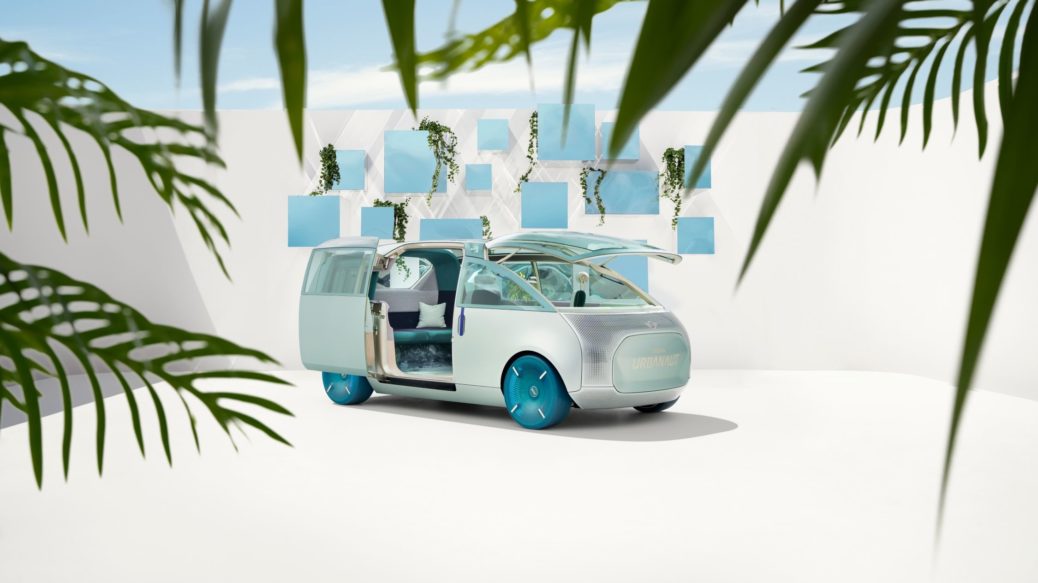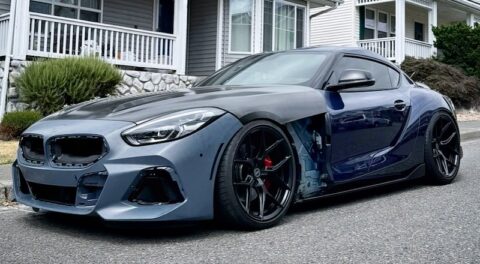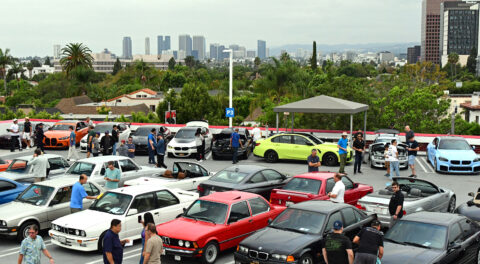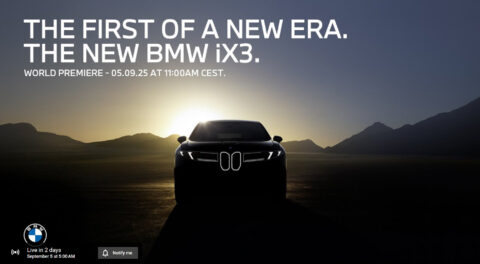Last week, during the seasonal fanfare of the Los Angeles Auto Show, I was fortunate enough to have the chance to explore some visions of future mobility from the BMW Group. Among them was acertain silver streamlined sphere that you see here: the Mini Vision Urbanaut. And while this particular concept vehicle (or Vision, in BMW parlance) was first unveiled last year (both in computer-generated form, and later as a physical vehicle in Europe), Los Angeles represented the first chance for North America to experience the vehicle in person, and after hanging around it for the better part of two days, I have some thoughts on the large, friendly-looking vehicle.
On its face, the Mini Vision Urbanaut feels like a lot of those “transportation pods” we’ve seen at auto shows from time to time over the last several years. Focused for the most part on interior design, and touting autonomous attributes that suspend reality in one way or another, they’re interpretations on this theme that we’ve seen from a variety of manufacturers. These egg-shaped vehicles tend to focus on the experience inside the vehicle, predicting a world of business calls and massages while the car performs its autonomous duties, chauffeuring busy business people to and from their very important destinations. They represent transportation in its most concentrated form, shuttling humans as cargo across the same CGI city block, animations playing on loop.
It’s all terribly drab.
But the Mini Vision Urbanaut, for all its surface-level similarities to those other transportation devices, takes on the future of mobility from a different (and very intentional) angle. As you can see, the Urbanaut is obviously what most would call a van (Mini, despite a barrage of encouragement, refuse to consider the ready-made moniker of the Mini Van… which is what Satch calls his 1965 Mini Cooper panel van)).
The Vision Urbanaut has the sliding door (with a very clever two-piece using quadruple-hinge arrangement, no less), the voluminous interior, and the single-box design of a minivan; it meets the established criteria. But it also has some distinct design elements that dramatically change its functions. The brand is pushing their mood-enhancing circular display screen and sustainable interior fabrics, but there is plenty above the surface. There’s the modular interior, with swing-arm seat backs that can form a seemingly-infinite combination of couches and beds, and rotating seats centered around that trick sliding door and rear window. The Urbanaut is surrounded by glass, from the rear window and cavernous roof up to a strut-supported front windshield that lifts from the bottom, opening the entire cabin to fresh air.
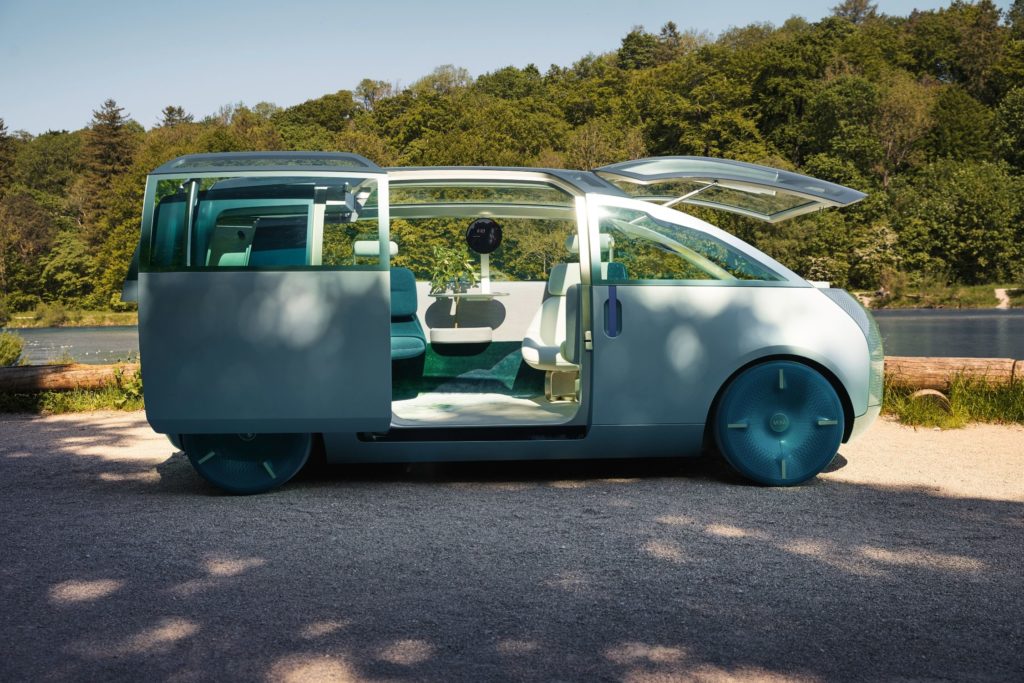
Whether Mini actually expands into this segment or not, it should be clear to anyone who has visited a National Park in recent memory that in the van market, business is good. Vans are everywhere, the vehicle of choice for outdoor adventurous types—and, perhaps more important, the vehicle of choice for drivers who only want to be outside a little bit. In truth, the Vision Urbanaut, in its marketing materials and in practice, is not a concept designed for maximizing productivity inside; it’s built around a desire to exist within the environment in a way that I don’t think we consider enough in our typical automotive pursuits.
Look at automotive design, for one: We, the driving populace, are awash with vast surfaces, rising hiplines, and shrinking window space. If you’ve driven a vehicle built after 2013, following the government’s backup-camera mandate, you’re no doubt familiar with the fact that increased crash structure, safety systems, and the demands of automotive design have created cars that are difficult to see out of. While there are safety implications here—the same requirements that have resulted in the proliferation of onboard cameras—we lose touch with our environment in the process.
But van people already know this. It started in the van-crazy, porthole-window ’70s, continued through the conversion van, velour-interior ’80s, multiplied with the Ford E-Series and Chevrolet Express of the ’90s, grew with the Sprinter of the aughts, and went upmarket in the teens, until we arrive at today’s red-hot van industry. The van lifestyle has known all along that you’re selling an immersive experience, and while the market is saturated with fully-equipped Sprinters from the likes of Winnebago and Airstream that sell for $200,000 or more, the beauty of the lifestyle is really much more simple.
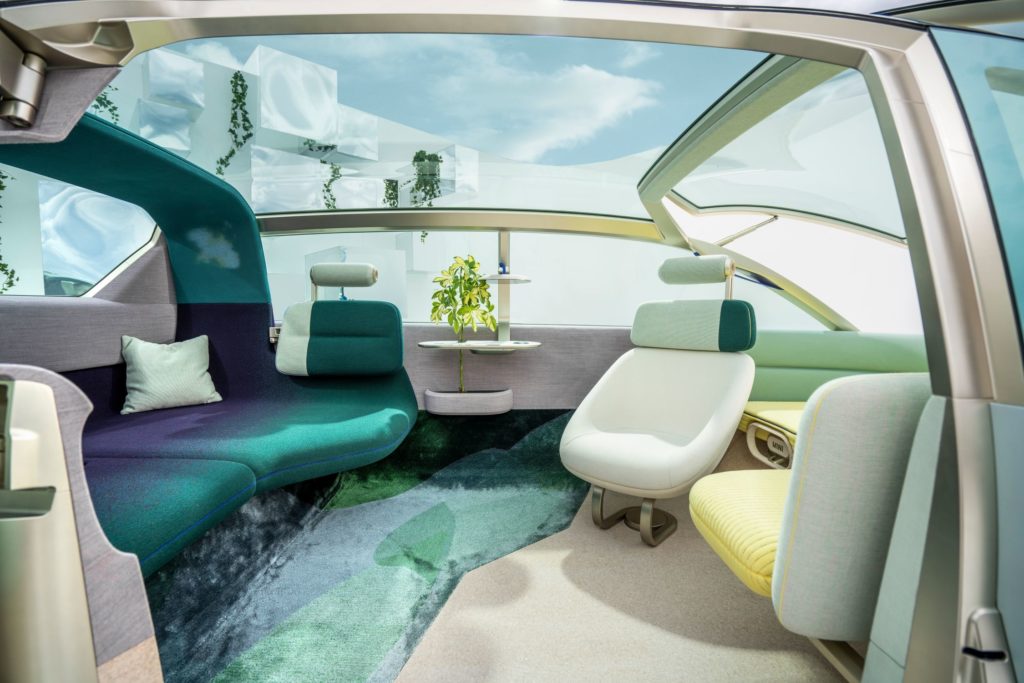
Futuristic shapes or not, the multi-function interior concept is a time-tested van essential.
What we lack—and what the van-buyers seek—is immersion, the opportunity to be present in our environment. [Roadster fanatics might question this assumption.—ed.] It’s hard, admittedly, with the rigorous safety standards of the modern market, but it doesn’t require the removable doors of a Ford Bronco or Jeep Wrangler to achieve immersion. It can mean an upright windshield, a tall seating position, a wide, flat hatch area with extra visibility from the tailgate; it can mean a sense of space around the car, or simply a good place to stretch out and relax.
When I looked at the Mini Vision Urbanaut, I didn’t see it under auto-show lights. I saw it in all the places I took my old 1980s Toyota 4Runner, with its twelve windows and endless combinations of seats and beds, or the biomes where a friend and I took his Winnebago Revel Sprinter van during a cross-country drive. Minus the light-up skateboard wheels, seamless body, and autonomous interior, I pictured the Urbanaut under the towering redwoods of California’s Avenue of the Giants, or by a marsh in Cape Cod at sunset, or in the Black Hills of South Dakota. It’s a vehicle of immersion, in the best possible sense.
At one point last week, one of my friends at BMW commented that he wished he could plunk the Vision Urbanaut in his backyard, sit in it, and enjoy a book. Another mentioned that the layout would make for an excellent boat, with beds fore and aft, and that gorgeous, raised front glass. I side with these takes, and every other expression of joy inspired by the Urbanaut. Mini often references the Alec Issigonis days and their creative use of interior space, but in the Vision Urbanaut, they have realized a creative use of exterior space.
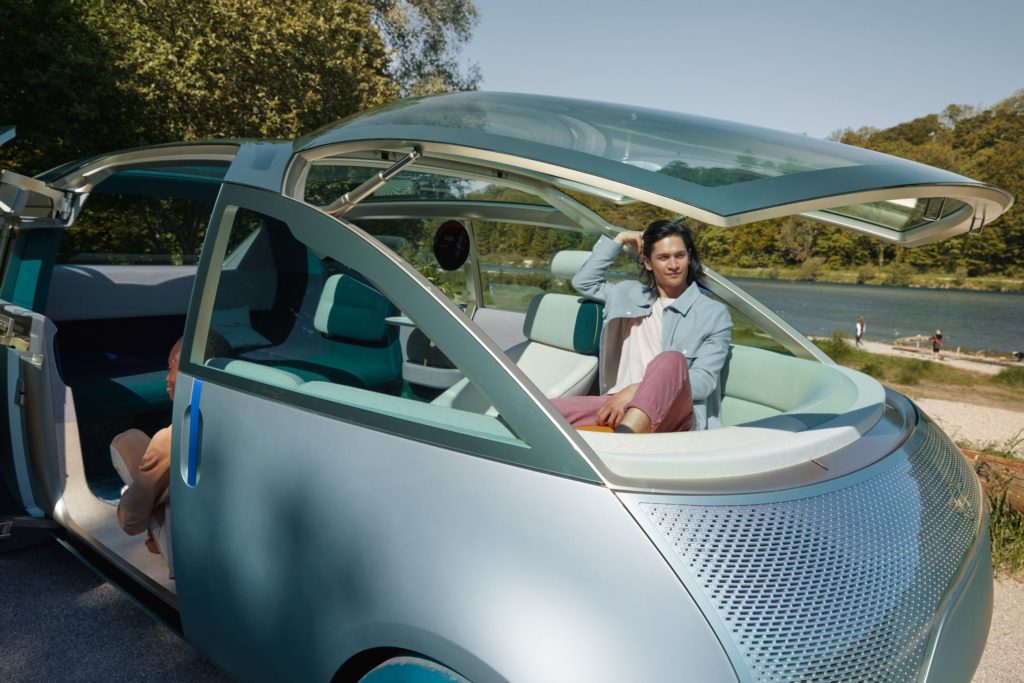
If transportation is moving towards being a room to do things in, you might as well place that room somewhere fun.
Whether they build a van or not, I hope that some of the themes of the Vision Urbanaut carry through into production models somewhere. If personal transportation of the future can’t be focused solely on driving, offer us a mode that lets us be part of the physical world instead. Picture a BMW or Mini with a couple of extra windows over the rear hatch and some extra, pop-open windows—on the beach or under the pines, out there in the world.
If it happens, I know I’ll be ready.—David Rose
[Photos courtesy BMW AG.]

